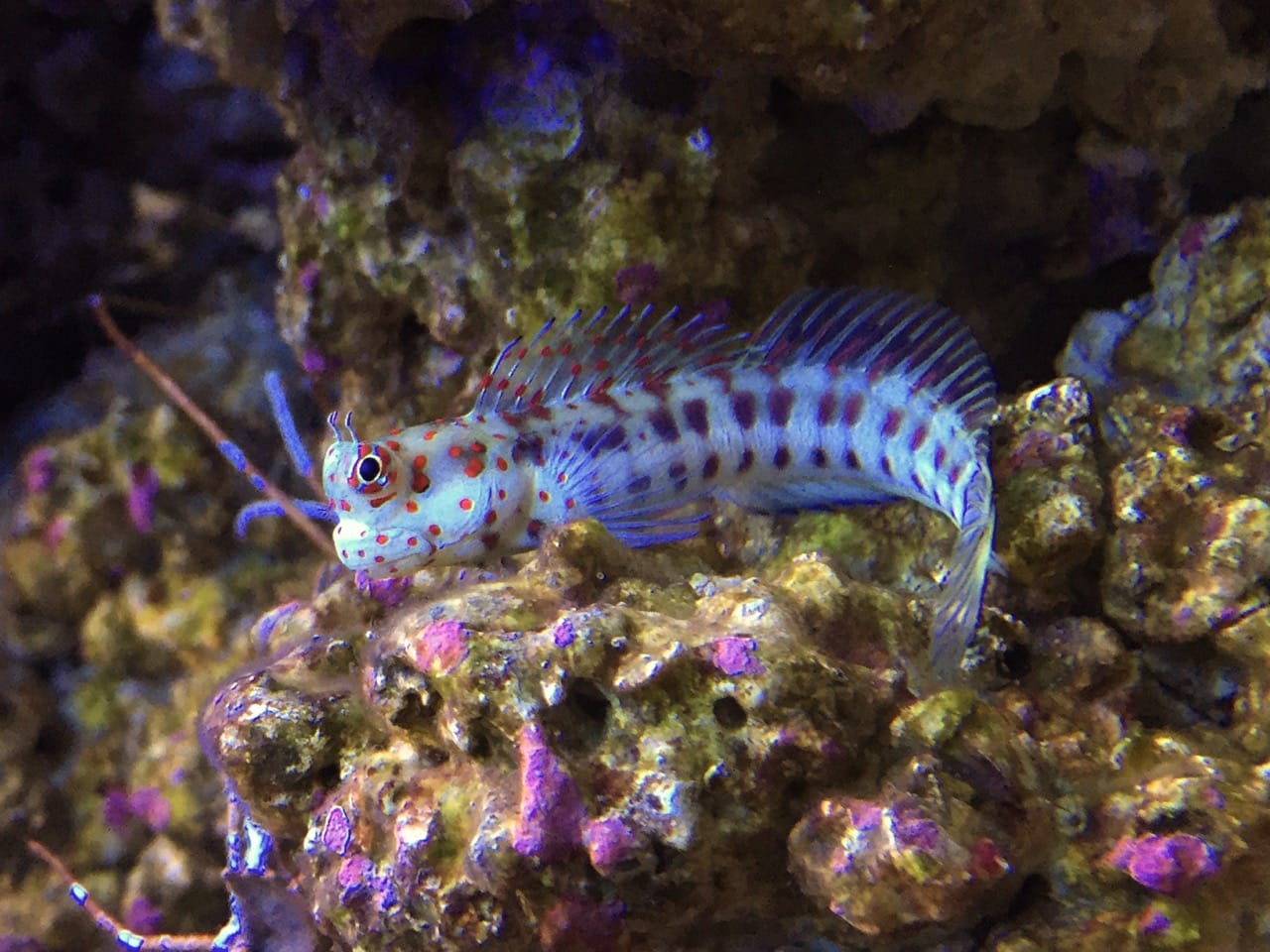Welcome to the wonderful world of the Tailspot Blenny, a delightful fish that’ll add color and intrigue to your aquarium. This comprehensive guide covers everything you need to know to keep your Tailspot Blenny happy and healthy, helping you create a thriving underwater world in your living room!
Unveiling the Tailspot Blenny: Personality-Packed Aquarium Delights
The tailspot blenny – a small fish with a big personality! These vibrant creatures are hardy, entertaining, and boast a cool black spot on their tail, making them a favorite for aquarium enthusiasts of all levels. Let’s dive into what makes these fascinating fish tick!
Creating the Perfect Habitat: A Blenny’s Dream Home
Just like us, blennies appreciate a comfortable living space. A 30-gallon tank is an ideal starting point, providing ample swimming room and surface area for algae growth, their favorite snack.
Water conditions are crucial for a thriving blenny. Aim for a temperature between 72-78°F, salinity around 1.020-1.025 SG (specific gravity, a measure of salt content), and a pH between 8.1-8.4.
Deciphering the Blenny Diet: From Algae to Treats
Tailspot blennies are the grazers of the sea, relishing film and hair algae in their tank. Supplement their natural diet with algae wafers, spirulina, and even blanched spinach. As a special treat, offer brine or mysis shrimp occasionally.
Blenny Behavior and Compatible Tank Mates: Peaceful Coexistence
These quirky fish are a joy to observe. You’ll find them perching on rocks, surveying their surroundings, and “blinking” with their expressive eyes. While generally peaceful, they might display territorial behavior towards similar-looking blennies.
Ideal tank mates include other peaceful fish, playful gobies, and elegant firefish. Avoid aggressive or overly large species that could bully your blenny.
Tailspot Blenny: A Closer Look at Distinctive Traits
Their namesake black tailspot is their most recognizable feature. They also sport black and yellow stripes below their eyes, adding to their charm. Don’t be fooled by their small size; their streamlined bodies make them surprisingly agile swimmers.
Love in the Aquarium: Breeding Tailspot Blennies
Male tailspots are dedicated fathers. They claim a territory, attracting females with displays of courtship. Once a female lays eggs in a cave or crevice, the male fiercely guards them until they hatch, a testament to their paternal instincts.
Tailspot vs. Bicolor Blenny: Spotting the Difference
While often confused, key differences distinguish these species. Tailspots are generally smaller, possess a more prominent black tailspot, and have less dramatic eye stripes than Bicolor Blennies.
Building a Blenny Paradise: Essential Habitat Enrichment
A happy blenny thrives in a stimulating environment. Incorporate ample live rock, providing caves and crevices for hiding and spawning. Get creative with a mix of rock types like porous limestone or volcanic rock, mimicking their natural habitat.
Why the Tailspot Blenny Rocks: A Summary of Benefits
These algae eaters are a delightful addition to any aquarium. They’re visually stunning, relatively low-maintenance, and brimming with personality. By providing the right care and a stimulating environment, you’ll enjoy the company of a happy and healthy tailspot blenny for years.
Are Tail Spot Blennies Reef Safe? Unveiling the Truth for Aquarium Harmony
Will a Tailspot Blenny Eat Hair Algae? Decoding the Truth for a Cleaner Tank
Are Tailspot Blennies Hardy? Exploring Their Resilience in Aquarium Environments
Key Points about Tailspot Blenny:
- Appearance:
- Colorful with a distinctive black tailspot
- Black and yellow stripes below eyes
- Habitat Requirements:
- 30-gallon tank
- Temperature range: 72-78°F
- Salinity: 1.020-1.025 SG
- pH: 8.1-8.4
- Diet:
- Primarily algae grazers
- Supplement with algae wafers, spirulina, and blanched spinach
- Behavior:
- Peaceful and friendly
- May become territorial towards similar-looking blennies
- Tank Mates:
- Peaceful fish
- Gobies
- Firefish
- Breeding:
- Males guard eggs in caves or crevices
- Hatching period: Approximately 10 days
- Distinguishing Features from Bicolor Blenny:
- Smaller size
- Bolder black tailspot
- Less dramatic eye stripes
- Habitat Enrichment:
- Plenty of live rock for hiding and spawning
- Mix of rock types to mimic natural environment
- Benefits of Keeping Tailspot Blennies:
- Algae eaters contribute to tank maintenance
- Visually appealing and entertaining to watch
- Relatively low-maintenance and suitable for various aquarium levels
People’s Statements:
- “‘Some tailspot blennies are reef-safe, but it’s uncertain whether they nip at corals to eat them or simply to remove algae. Not all tailspot blennies are safe for a reef tank.'” – Saltwater Aquarium World
- “‘They do sometimes play dead, when threatened, so don’t get too alarmed, and certainly don’t be too hasty with the net.'” – Saltwater Aquarium Blog
- Unveiling Bernhard Caesar Einstein’s Scientific Achievements: A Legacy in Engineering - July 15, 2025
- Uncover who is Jerry McSorley: CEO, Family Man, Business Success Story - July 15, 2025
- Discover Bernhard Caesar Einstein’s Scientific Contributions: Unveiling a Legacy Beyond Einstein - July 15, 2025















